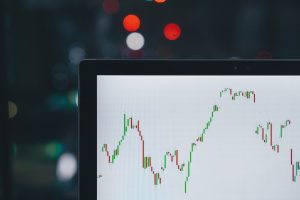Scalping is a popular trading strategy in the forex market that involves making small profits from frequent trades. In order to successfully implement scalping, traders need to have a well-defined plan and a solid understanding of the market. In this article, we will discuss how to set up scalping in forex, including the tools and techniques that are required.
Step 1: Choose a Broker
The first step in setting up scalping in forex is to choose a broker. It is important to select a broker that offers low spreads and fast execution times, as scalping involves making quick trades. Traders should also look for a broker that offers a range of trading tools and platforms, including charting software, technical indicators, and news feeds.
Step 2: Choose a Currency Pair
Scalping can be applied to any currency pair, but it is important to choose a pair that has high liquidity and low spreads. Popular currency pairs for scalping include EUR/USD, USD/JPY, and GBP/USD. Traders should also keep an eye on market volatility, as this can impact the success of scalping strategies.
Step 3: Choose a Timeframe
Scalping is a short-term trading strategy, so traders should choose a timeframe that suits their trading style. Popular timeframes for scalping include the 1-minute, 5-minute, and 15-minute charts. Traders should also use multiple timeframes to get a better understanding of market trends and to confirm trading signals.
Step 4: Use Technical Indicators
Technical indicators are essential tools for scalping in forex. Traders should use a combination of indicators to identify potential trading opportunities and to confirm signals. Popular indicators for scalping include moving averages, Bollinger Bands, and the Relative Strength Index (RSI).
Step 5: Set Trading Rules
Scalping requires a well-defined set of trading rules to ensure consistent profits. Traders should set rules for entry and exit points, stop losses, and take profit levels. It is also important to have a clear understanding of risk management, including the maximum amount of risk that can be taken on each trade.
Step 6: Monitor the Market
Scalping requires constant monitoring of the market, as traders need to be able to react quickly to changing conditions. Traders should use news feeds and economic calendars to stay up-to-date on market events and to anticipate potential market movements. It is also important to monitor technical indicators and to adjust trading strategies as needed.
Step 7: Practice and Refine
Scalping requires practice and experimentation to develop a successful trading strategy. Traders should test their strategies on a demo account before trading with real money. It is also important to constantly refine trading strategies based on market conditions and feedback from trades.
Conclusion
Scalping is a popular trading strategy in the forex market that involves making small profits from frequent trades. To set up scalping in forex, traders need to choose a broker, currency pair, and timeframe, and use technical indicators to identify potential trading opportunities. Traders should also set trading rules, monitor the market, and practice and refine their strategies. With the right tools and techniques, scalping can be a highly profitable trading strategy in the forex market.





